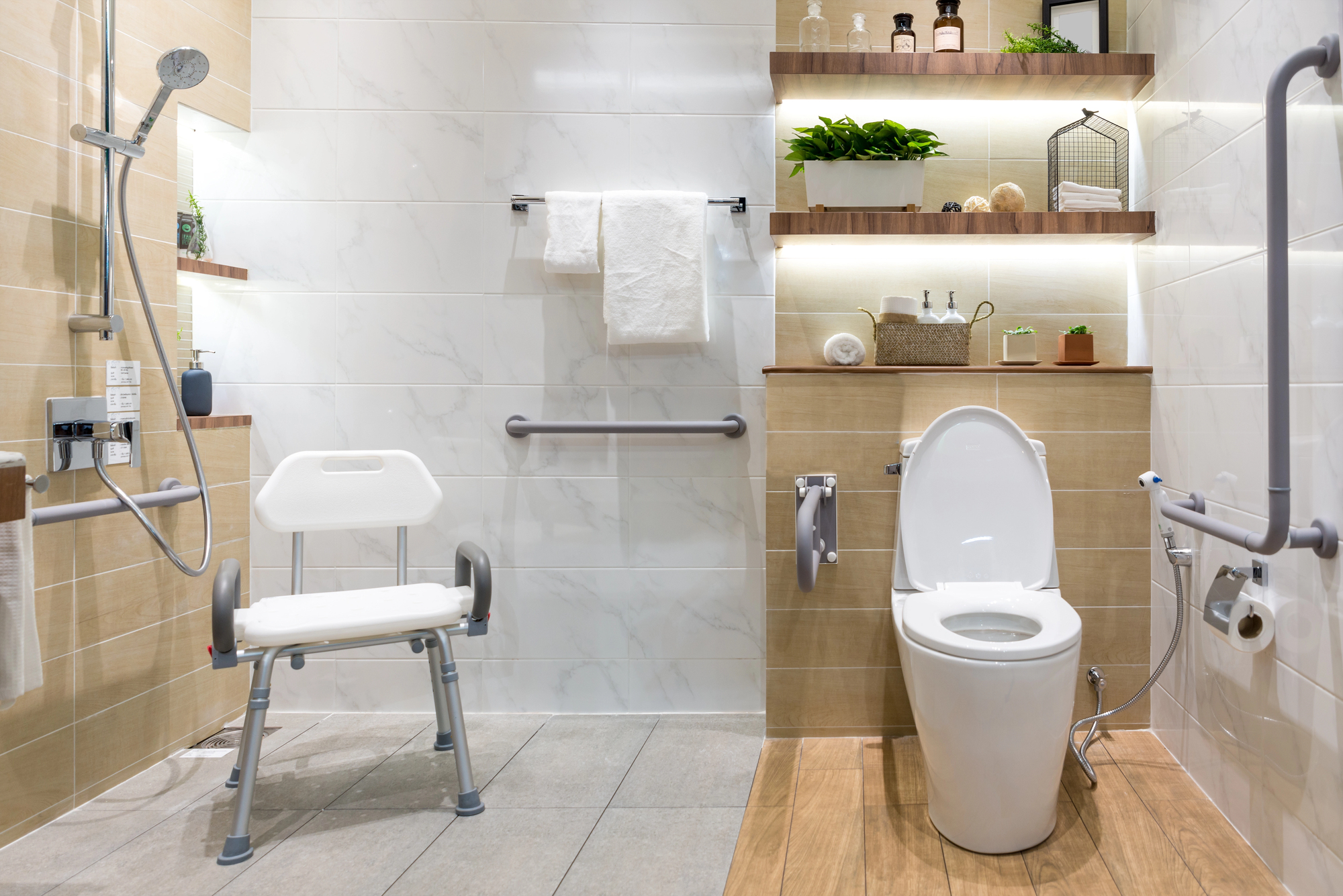Making your home ready for your later years is one of the smartest investments you can make. Whether you’re planning ahead or adapting to current needs, thoughtful modifications can help you stay comfortable and independent in your home for years to come.
Contents
Start with Safety: The Foundation of Aging in Place
The bathroom often needs the most attention. Installing grab bars near toilets and in showers provides crucial support. A walk-in shower with a zero-threshold entry eliminates dangerous tub walls. Consider a shower bench and a handheld showerhead for easier bathing. Anti-scald devices on faucets prevent accidental burns when balance or reaction time isn’t what it used to be.
Lighting becomes increasingly important as we age. Add motion-sensor lights in hallways and bathrooms for nighttime navigation. Under-cabinet lighting in the kitchen makes food preparation safer. Eliminate dark corners by installing additional fixtures, and use higher-wattage bulbs where appropriate.
Making Movement Easier
Doorways should be at least 36 inches wide to accommodate walkers or wheelchairs. Replace doorknobs with lever handles, which are easier to operate with arthritis or limited hand strength. Similarly, loop-style handles on cabinets and drawers are more manageable than knobs.
Consider your flooring carefully. Remove throw rugs – they’re trip hazards. Replace high-pile carpet with low-pile versions or hard surfaces like vinyl or hardwood. Whatever flooring you choose, ensure it provides good traction while being easy to maintain.
Kitchen Modifications for Independence
The kitchen can be modified to remain functional as abilities change. Pull-out shelves in lower cabinets eliminate the need to bend and reach. A side-by-side refrigerator makes items more accessible than a top-freezer model. Consider lowering upper cabinets slightly and installing pull-down shelving systems.
Countertop height is crucial – consider installing sections at different heights to accommodate both standing and seated food preparation. Touch-activated faucets eliminate the need to grip and turn handles.
Smart Technology for Safety and Convenience
Modern technology offers excellent solutions for aging in place. Smart home systems can control lighting, temperature, and security from a phone or tablet. Video doorbells let you see visitors without rushing to the door. Motion sensors can alert caregivers to unusual patterns that might indicate a problem.
Making the Entry Safe and Accessible
The entrance to your home deserves special attention. Install solid handrails on both sides of exterior steps. Consider adding a ramp or ensuring at least one entrance is step-free. Good lighting and non-slip surfaces are essential for outdoor walkways.
Planning for the Future
When making modifications, think long-term. Even if you don’t need certain features now, rough in support for future grab bars during bathroom renovations. Install electrical outlets at higher levels to reduce bending. Choose appliances with easy-to-read controls and simple interfaces.
The Often-Overlooked Details
Some important modifications are less obvious. Raise electrical outlets and lower light switches to make them accessible from a seated position. Install anti-scald devices on faucets. Add pull-out shelves in the laundry area and ensure good task lighting for reading labels and sorting clothes.
Managing Costs and Implementation
While some modifications can be expensive, many important changes are quite affordable. Start with the most critical safety features and develop a long-term plan for larger projects. Many modifications may qualify for tax deductions or credits, and some organizations offer grants for aging-in-place renovations.
Conclusion
Creating a home that ages with you is about maintaining independence and quality of life. The best modifications are those that enhance safety and convenience while preserving the comfort and character of your home. By planning ahead and making thoughtful changes, you can create a space that supports your needs both now and in the future.
Remember, aging in place isn’t just about making your home safer – it’s about creating an environment where you can thrive and maintain your independence for years to come. Start planning today, and you’ll thank yourself tomorrow.
